2022-2024
Principal Product Designer
Reimagining Remote Collaboration
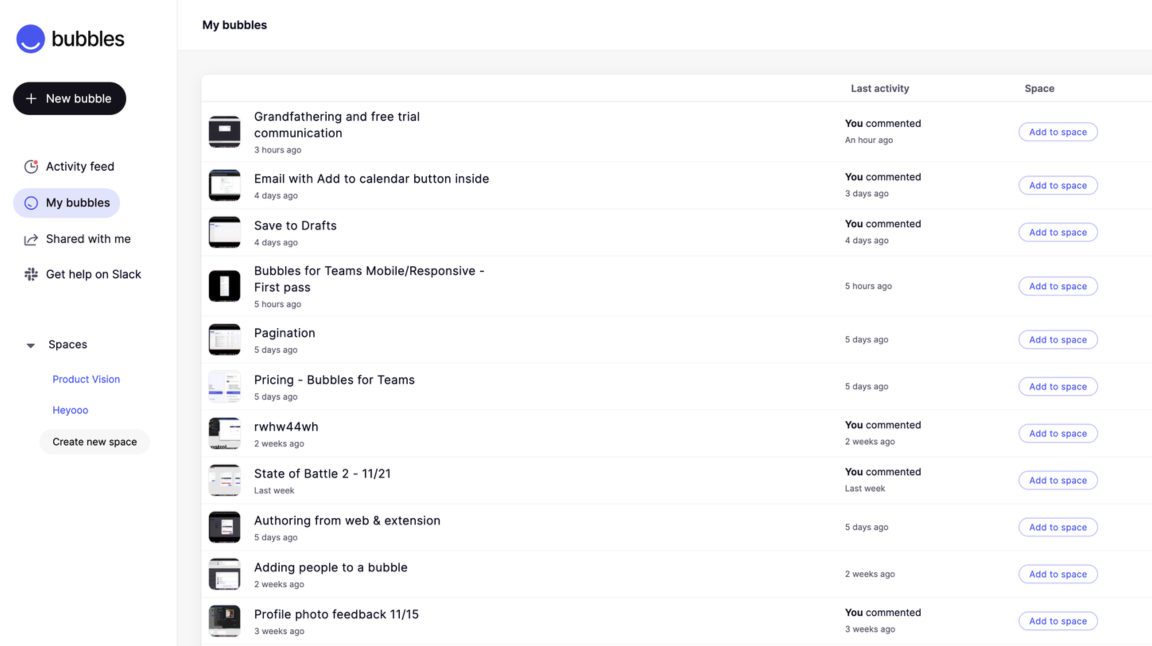
In 2022 I joined a seed-stage startup called Bubbles as Principal Product Designer. At the time, Bubbles was a single-player, free-to-use screen recorder - think Loom, but with a vision to become a conversational platform for back-and-forth remote team collaboration, rather than one-way presentations. The journey that followed would teach me valuable lessons about 0-to-1 product design, user psychology, and the delicate balance between innovation and user needs.
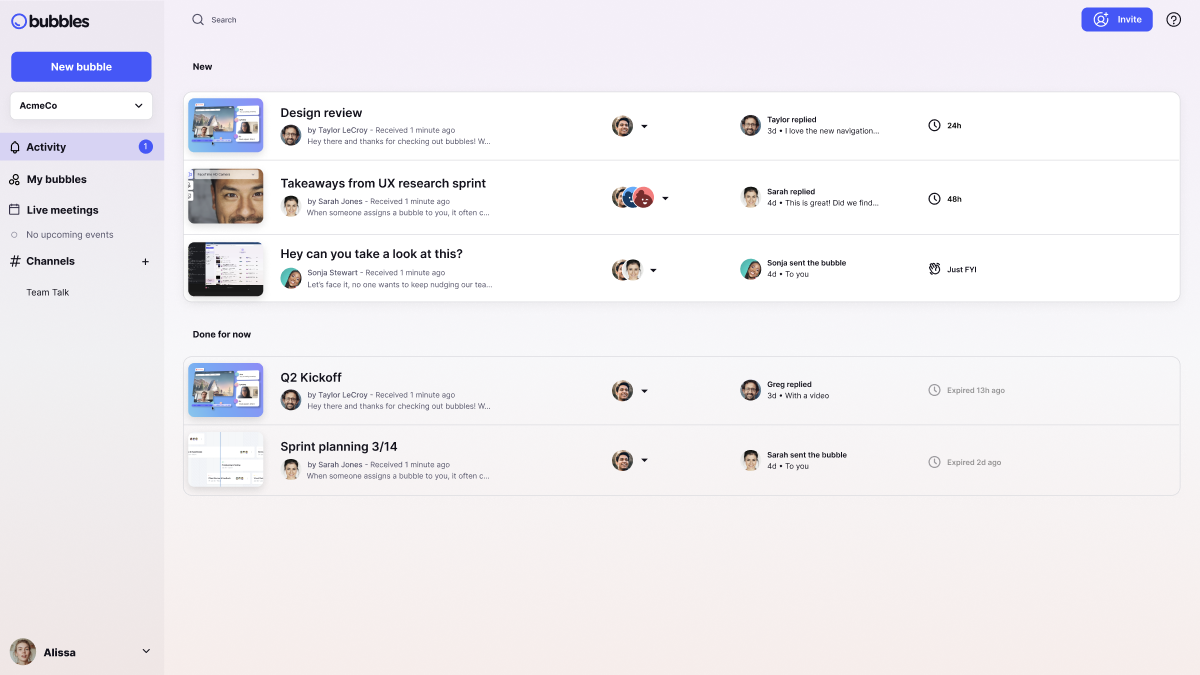
The challenge
Bubbles had a core group of about 20,000 monthly active users. They were big fans. They loved the app for its lightweight onboarding, ease-of-use, and most of all the fact that it was entirely free. Bubbles was well-liked and useful, but not yet transformative. Users could record their screen, add their camera feed, and share links. While functional, it wasn't living up to our long-term vision of an async communication platform for remote teams. My task was to address the deeper challenges of collaborating across time zones, when your teammates are going to sleep as you're starting your day.
We also faced the challenge all venture-backed startups do: Find a path to monetization. Quickly. Bubbles was on the clock, and the clock was ticking.
Uncovering the real problem
I began working with our PM to interview remote workers in our target audience, revealing a critical insight: the true pain point for remote teams wasn't about recording quality or features – it was about uncertainty.
People working together across time zones were stuck in a perpetual state of limbo, never knowing when (or if) they'd receive the input or feedback they need to keep their projects moving on schedule. Work would stall, momentum would fade, and frustration would mount. This revelation led to our first major innovation: time-bounded collaboration.
The power of the deadline
We introduced a timer that creators could set when recording their video messages – a seemingly simple feature that profoundly impacted user behavior. Authors could now set clear expectations for response times, and designate recipients as either "Response required" vs. "Just FYI"; with reminders sent out to the former until the timer ran out.
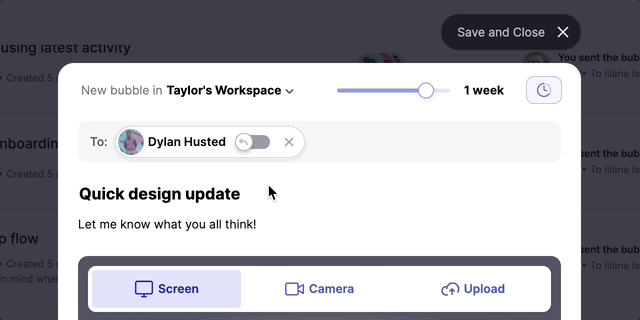
Having video context for replies was equally important. Our core belief was that screen sharing allowed for visual context that just doesn't come across in an email, bullet points or a wall of text, whether in the original video or in replies and feedback from recipients:
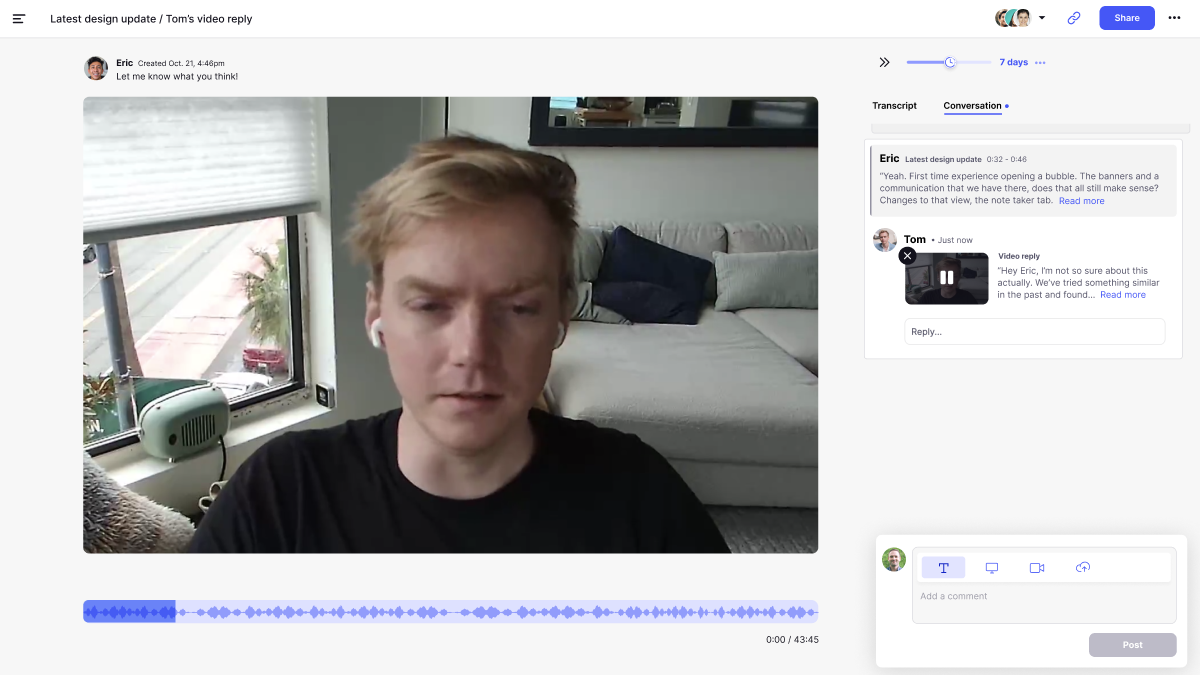
Building for scale and security
As we gained traction with larger teams, we recognized the need for more structured collaboration. We implemented:
• Role-based access control for enterprise security
• Project-based channels for organized communication
• Flexible timer extensions for Pro users
The AI evolution
Our biggest bet came with the integration of AI to the platform. Rather than take on the herculean task of convincing users to change their communication habits, we'd meet people where they already were - in live meetings on Zoom, MS Teams, and Google Meet. We'd aim to become the place to unpack the meeting and distribute action items async to avoid endless, hard-to-schedule follow-ups. We developed an intelligent meeting recorder that could:
• Connect with existing calendar systems like Google and Outlook
• Automatically transcribe meetings, delivering AI summaries and next steps
• Create smart sharing rules
• Generate follow-up spaces for asynchronous discussion
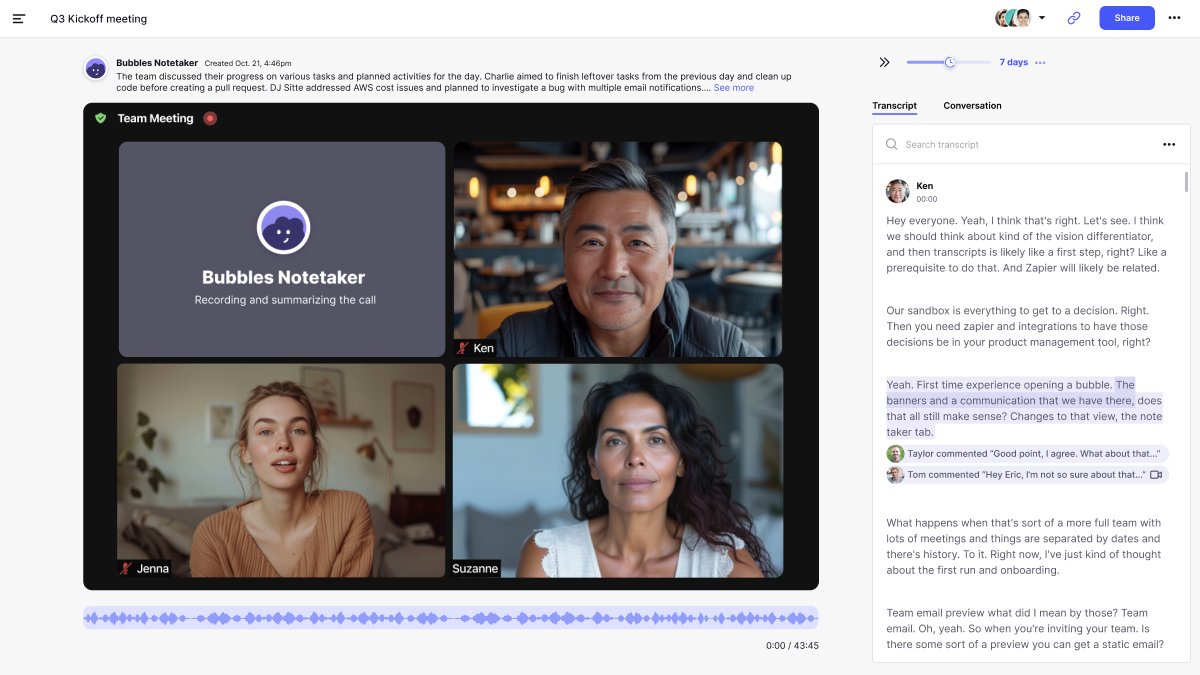
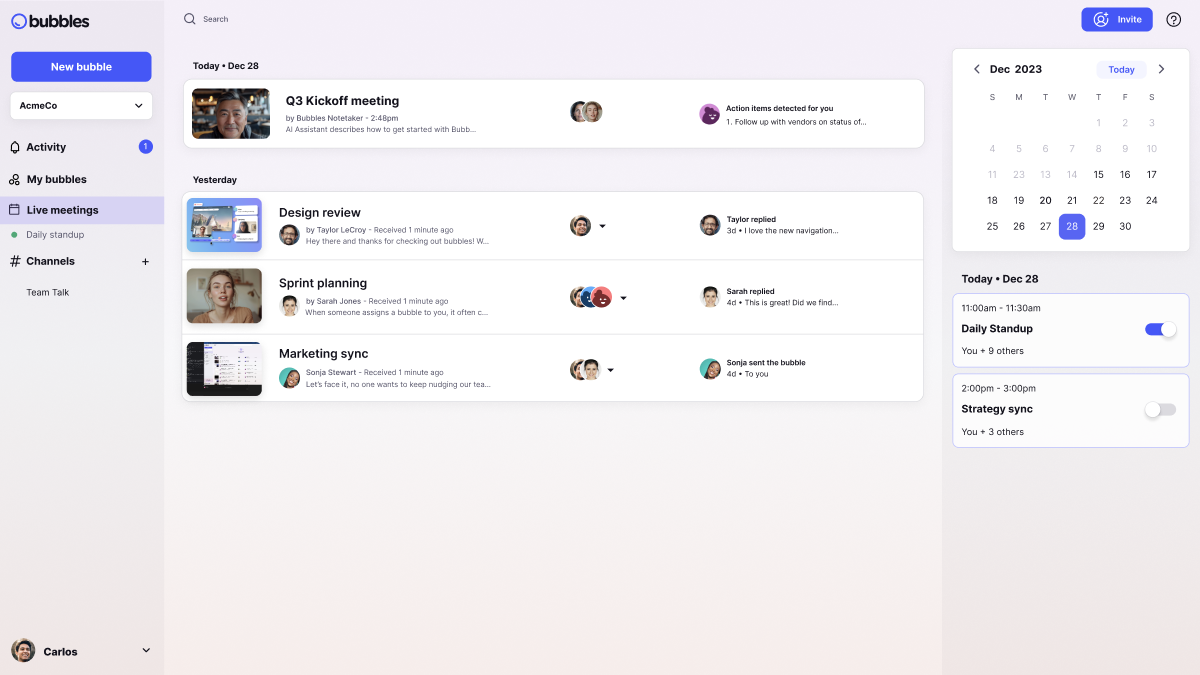
The final vision: Your remote video inbox
The culmination of our work was a beautifully designed video inbox – a morning destination for catching up with your team's updates. It represented a fundamental shift from reactive to proactive collaboration.
Impact & Learnings
While Bubbles ultimately didn't unlock the explosive growth needed to secure its next round, we we proved our concept with significant milestones. The company grew from $0 to $500K ARR through word-of-mouth, transformed thousands of free users into paying customers, and built a product that users raved about using.
Key design principles I learned
• Start with user psychology, not features
• Make complexity feel effortless
• Design for habits, not just actions
• Balance innovation with familiarity
Reflection
Looking back, Bubbles was more than a product – it was an experiment in changing how teams communicate. While we may not have reached our ultimate goal, we proved that with thoughtful design and clear focus on user needs, you can create meaningful change in how people work together. The journey from simple screen recorder to sophisticated collaboration platform taught me that great product design isn't just about solving problems – it's about understanding human behavior and folding that knowledge into crafting an experience that augments and builds upon existing behavior.